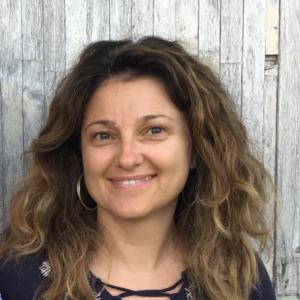Emotions and reflective practices
A source for learning and cultivating emotional intelligence
This article looks into the role of emotions and reflective practices as a source for profound learning and cultivating emotional intelligence. The article is based on the work of practitioners currently facilitating process oriented experiential learning courses in the area of leadership. It highlights the current need for an authentic and embodied leadership approach and for the cultivation of emotional intelligence as the specific skill embodying this approach.
Leadership is at the core of all human activities and interactions and is the foundation for progress and change. In terms of humanity’s wider development, authentic and embodied leadership is one possible answer to the uncertainty, complexity, ambiguity and volatility of our challenging times. Scharmer talks about how successful leadership depends on the quality of attention and intention that leaders bring to any situation and that the outcomes depend on the inner place from which they operate . A key lesson from his work “Theory U” is that individuals can only reach their full potential if they are aware not only of themselves, but also of the way in which they relate to the social body of society and the earth body of their environment . Our inner dimension is made up of emotions. Since the beginning of humanity, emotions have always had an impact on our decisions and have been useful allies in making meaning out of what we experience.
“Emotions are a distillation of learned wisdom: the critical survival lessons of life are emotionally hardwired into our DNA. We have been biologically shaped to be fearful, worried, surprised, suspicious, joyful, and relieved, almost on cue. We must cease the long standing habit of thinking of emotions as always irrational or having nothing to do with the ways we think. Emotions are a critical source of information for learning” . Emotions play a critical role in the construction of meaning and knowledge of the self in the adult learning process .
It is therefore of vital importance that we learn how to recognise, value and manage our emotions in order to make active use of the signals they send us. Learning to do this means learning how to progressively nurture and cultivate our own emotional intelligence, since this is the skill that allows us to act effectively and in accordance with our inner feelings and in the here and now. From this perspective emotional intelligence is an essential feature of embodied and authentic leadership that’s grounded in the present moment. Learning to become emotionally intelligent in one’s leadership approach is helpful when practicing the new paradigm of successful organisations that dismiss the “predict and control” attitude in favour of a “sense and respond” paradigm, which is better suited to the evolutionary purpose of humanity . In the words of Otto Scharmer, leaders must shift from an “ego-systemic” view that focuses entirely on their own well-being and that of their immediate context, to an “eco-systemic” awareness of everyone’s well-being, including themselves. “Today’s economic reality is embedded in a global eco-system of environmental, social, political, and cultural contexts that are highly intertwined and that evolve in uncertain, complex, and volatile ways. These conditions require a mind-set of decision-makers that is more open, attentive, adaptive, and tuned in to emerging changes”. Leaders need to shift from seeing only their individual viewpoint (ego-system) “to experiencing the system from the perspective of others (eco-system), particularly those who are most marginalised. The goal should be to co-sense, co-inspire, and co-create an emerging future for their system that values the well-being of all rather than just a few. This is not just an ethical but an economic imperative” It is quite clear that an eco-systemic leadership approach, which aims at a full expression of the higher self in service of the collective good, needs a highly developed emotional intelligence.
Since the latest neuroscientific research has shown that our brain is plastic and capable of making new neural connections if trained to do so, both leadership and emotional intelligence can be no longer considered the exclusive talents of some lucky individuals. They are rather competences that all of us can learn to cultivate through a daily practice of “presencing” and self-awareness. The term “Presencing” is a term borrowed from Scharmer, which he defines as a state where “perception begins to happen from a future possibility that depends on us to come into reality. In that state we step into our real being, who we really are, our authentic self.”
Self-awareness and presencing can be acquired through a lifelong and instinctive commitment to learning, one of the most basic human behaviours. In fact, as human beings we are continually looking for information that can help us to make meaning of our experiences. Adults in particular look for ways to understand experiences as they occur, hoping to learn something that can be applied to other interactions and challenges . Experience is one of the main components of the experiential learning based approach, in which the subject matches the interests of the learner and the learner is able to directly encounter the phenomenon to be understood. This includes all experiences of interaction with individuals and groups, family and friends, and in institutions. Inevitably, some of the interactions in these environments are affected by the wider social, political, cultural and economic environment.
Scholars such as Callahan, Dirkx, Goleman and Lutz all state that experience is not isolated, but rather connected to previous learning opportunities. Each of these past experiences are associated with emotions that help us to make meaning of physical and social surroundings. “Emotions are important in adult learning because they can either impede or motivate learning” . They serve as a motivation to pursue desires, they create purpose and shape the context of learning experiences . “Through the experience of emotions, [we] come to recognize what is cognitively and affectively of value,” helping determine how and why we respond to the world around us . Damasio likewise asserts that emotions are essential to human reason and that the absence of emotion can actually interfere with rationality and decision making.
Cognitively we assign values, make judgments, and work in the context of cultural norms to take action. Caine and Caine state that “What we learn is influenced and organised by emotions and mind-sets involving expectations, personal biases, and prejudices, self-esteem, and the need for social interaction” . They maintain that emotion and cognition cannot be separated from learning but are rather both integral to the learning process. “Emotion is the foundation of learning. The chemicals of emotion act by modifying the strength and contribution of each part of the learning cycle. Their impact is directly on the signalling systems in each affected neuron”.
Learning happens because our “brain, a pattern-finding organ, seeks to create meaning through establishing or refining existing neural networks [….]. Emotion affects what is learned and what is retained,” impacting the quality and strength of the neural trace or imprint in the brain.
In other words, there must be a strong enough emotional hook for the learner to notice something and begin the learning process. This has important repercussions for the ability to recall what has been learned or experienced. It becomes clear through all this that experience is needed to promote engagement and ignite deep learning.
On the other hand, emotion is “a double-edged sword, with the ability to enhance learning or impede it” . During periods of intense emotional response, neuroscience suggests that our ability to access higher order problem solving skills is diminished and becomes less efficient. Building on this idea, “successful learning may be seen as a ‘safe emergency’ – a state of high attention but without the debilitating anxiety” . Luck and Nadler suggest that people want to learn and thereby change a familiar situation into something new because of a “state of disequilibrium, that creates an unorganised affect or ego-confusion wherein a quality of disorganization or dissonance predominates. The act of restructuring or reordering to regain balance (equilibrium) is where change in feelings, thoughts, attitudes and behaviour pattern occur. Ironically it is in the process of getting lost, feeling [slightly] anxious and/or uncomfortable, that individuals find direction in themselves.“
Our bodies are also seeking for this equilibrium in the homeostasis process and are designed to take in sensory information from all around us. Our brains are designed to process, store, and act on information received from both external and internal stimuli . Stimuli are received and interpreted, constructing our very ideas of reality. Ideas are created internally and are assembled through mental structures that represent some aspect of the world. People use these mental structures to organise current knowledge and provide a framework for future understanding. For constructivists, human beings have no access to an objective reality , but only to mental structures. Social, physical, and emotional conditions are always changing, which means that developing strategies for learning and adaptation is essential for survival. Ongoing reflection about learned mental structures and behaviours can be a possible response to environmental challenges. In the experiential learning approach, the learner reflectively observes this experience in order to generate abstract concepts or theories that may be tested in new situations. This forms a cyclical process out of which learning from problem solving is incorporated into cognitive schema through assimilation or accommodation . What each of us makes of all these experiences depends partly on the way in which they reflect and confirm our inner world (or intra-personal experience). There is a dynamic relationship between the way we relate inter-personally. Our intra-personal experience and reflection plays a key role in this relationship. “Reflection involves the whole person, connecting more body and mind so to speak: thoughts, feelings, values, intuitions and experiences are taken into consideration when reflecting. It’s a holistic process usually indicated by some kind of emotional intensity in which learners demonstrate the connection between themselves and that-which-is-at-stake (the actual topic of reflection). This intensity can sometimes be expressed only in their non-verbal body language” . In this perspective, reflection becomes a holistic process where the wisdom of our body becomes the key to the emergence of unconscious activity. Tom Lucken states that “conscious thinking covers only a small part of the capacity of our brain. Unconscious processes have much more capacity. According to Dijksterhuis […] we can process unconsciously 200,000 times more quickly compared to conscious processing. The conscious mind works with serial processes, whereas the unconscious brain works with parallel processes. The conscious brain should necessarily limit itself to a few aspects, whereby there is always a certain arbitrariness. […] The conscious thinking is inclined to use logic, also for questions, paradoxes and dilemma’s that can’t be answered with logical thinking. One of the consequences is that in order to get to a solution inconsistent information gets ‘pushed away’, whereby the eventual decision is based on a distorted representation [of reality]”.
In the search for equilibrium, reflection and reflective practices become a possible way of creating the necessary space for noticing with attention and intention what is happening in the present moment from a “helicopter view”. Leaders that learn how to pause and reflect enable their body and intuitive wisdom to emerge and support them in befriending the uncertainty and ambiguity that are part of the complexity of reality. In an organisational context, leaders need to foster a culture of openness and trust that allow reflection, whether before, in or after an action, to become a collective practice. In order to do this leaders need to let go of their need for prediction and control because complex, dynamic systems are fundamentally unpredictable and uncontrollable.
Knowledge and information, no matter how detailed, will remain an insufficient and uncertain basis for guiding our path into the future. Leaders should keep in mind the words that Pericles spoke to his fellow Athenians more that 2,500 years ago: “we may not be able to predict the future, but we can prepare for it”.
Bibliography
- Caine, R. N., & Caine, G. (1990, Oct.). Understanding a brain-based approach to learning and teaching. Educational Leadership.
- Cozolino, L., & Sprokay, S. (2006). Neuroscience and adult learning. New Directions for Adult and Continuing Education.
- Damasio, A. R. (1994). Descartes’ error: Emotion, reason, and the human brain. NY: Avon Books.
- Dirkx, J. (2001). The power of feelings: Emotion, imagination, and the construction of meaning in adult learning. New Directions for Adult and Continuing Education,
- Dirkx, J. (2006). Engaging emotions in adult learning: A Jungian perspective on emotion and transformative learning. New Directions for Adult and Continuing Education. San Francisco: Jossey-Bass
- Goffman, E. (1959). The presentation of self in everyday life. Garden City, NY: Doubleday
- J.L Luckner & R. S. Nadler (1997). Processing the experience. Strategies to enhance and generalize learning. Kendall/Hunt Publishing Company.
- Jakube Aurelija, Jasiene Ginte,Taylor Mark, Vandenbussche Bert (eds), Holding the space. Facilitating reflection and inner readiness for learning. Erasmus+ project pubblication REFLECT 2014-2015
- Jensen, E. (1998). Teaching with the brain in mind. Alexandria, VA: Association for Supervision and Curriculum Development.
- Kolb, D.A. (1976). The learning Style Inventory: Technical Manual, McBer, Boston
- Kolb, D.A. & Fry, R. (1975). Towards an applied theory of experiential learning, in Cooper, C. (Ed.) Theories of Group Processes, Wiley, London
- Laloux Frederic (2014) Reinventing organisations. A Guide to Creating Organisations. Nelson Parker. Brussels
- Luken, Tom. (2010). Problemen met reflecteren. De risico’s van reflectie nader bezien. In Luken, Tom & Reynaert, W. (2010) Puzzelstukjes voor een nieuw paradigma? Aardverschuiving in loopbaandenken. Eindhoven-Tilburg: Lectoraat Career Development Fontys Hogeschool HRM en Psychologie.
- Merriam, S. B., & Caffarella, R. S. (1999). Learning in adulthood: A comprehensive guide (2nd ed.). San Francisco: Jossey-Bass
- Perry, B. D. (2006). Fear and learning: Trauma related factors in adult learning. New Directions for Adult and Continuing Education
- Scharmer Otto (2016) Theory U: leading from the future as it emerges. Berrett-Koehler Publishers. San Francisco.
- Scharmer Otto, Kaufer Katrin (2013) Leading from the Emerging Future. From Ego-System to Eco-System Economies. Berrett-Koehler Publishers. San Francisco.
- Von Glaserfeld, E. (2005). Introduction: Aspects of constructivism. In C. Twomey (Ed.), Constructivism: Theory, perspectives, and practices (2nd ed). New York: Teacher College, Columbia University.
- Wolfe, P. (2006). The role of meaning and emotion in learning. In S. Johnson & K. Taylor (Eds.), The Neuroscience of adult learning San Francisco, CA: Jossey-Bass
- Zull, J. E. (2006). Key aspects of how the brain learns. In S. Johnson & K. Taylor (Eds.), The neuroscience of adult learning. San Francisco, CA: Jossey-Bass
Angelica Paci
 For over 10 years I have been training and facilitating groups and individuals in their personal and professional growth and well-being through experiential learning programmes, where reflective practices have been a core element in learning and development. In recent years I have been working for Kamaleonte in the field of leadership, multiple intelligences and emotional intelligence. I am also a founding member of the international nonformal network of “Via Experientia” and of ALP. I believe that the group is a resource for learning and that diversity is a value that enriches people and the context in which they live, learn and work. This is why Otto Scharmer’s “Theory U” and Arawana Hayashi’s social presencing theatre are inspiring me and currently integrated in my work.
For over 10 years I have been training and facilitating groups and individuals in their personal and professional growth and well-being through experiential learning programmes, where reflective practices have been a core element in learning and development. In recent years I have been working for Kamaleonte in the field of leadership, multiple intelligences and emotional intelligence. I am also a founding member of the international nonformal network of “Via Experientia” and of ALP. I believe that the group is a resource for learning and that diversity is a value that enriches people and the context in which they live, learn and work. This is why Otto Scharmer’s “Theory U” and Arawana Hayashi’s social presencing theatre are inspiring me and currently integrated in my work.


